Sri Lanka, officially known as the Democratic Socialist Republic of Sri Lanka, is an island country in South Asia, situated in the Indian Ocean, to the southwest of the Bay of Bengal and southeast of the Arabian Sea. This island is geographically separated from India by the Gulf of Mannar and the Palm Strait, thus making it a unique and separate country. Sri Lanka has its capital city, Colombo. This country is known for its rich heritage. Sri Lanka obtained its political independence in the year 1948, and became a republic and adopted its current name in the year 1972. Having said that, let’s look into the top 10 monuments and its history that provoke each one of us to visit them at least once in our lifetime.
Gal Vihara
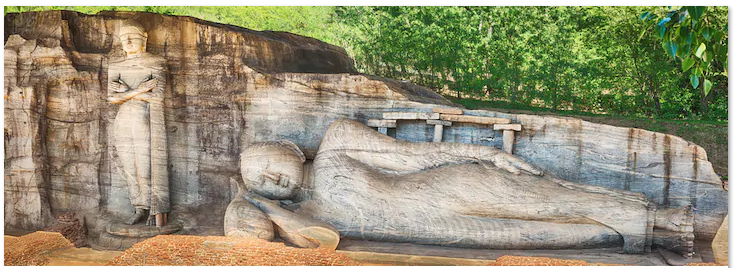
The Gal Vihara or “rock monastery” (named after the large rock face where the four images of the Buddha were carved). This was originally named as “Polonnaruwa”, and it is one of the most prominent of the hundred temples built throughout by the king Parakrambahu (1153 – 1186 A.C.). The central feature of the temple is four rock relief statues of Buddha, which has been carved into the face of large granite rock. The images consist of a large seated figure, another smaller seated figure inside an artificial cavern, a standing figure, and a reclining figure. This is one of the best examples of ancient Sinhalese sculpting and carving techniques. Thus, being one of the unique and most visited monuments in the country. This Gal Vihara in Sri Lanka is famously known as “The Northern Temple” during the early stage of its history, it was a cave complex of about 27 meters length and 10 meters in height at the center and sloppy towards the ends, with sculptures carved on the solid rock.
Polonnaruwa Vatadage
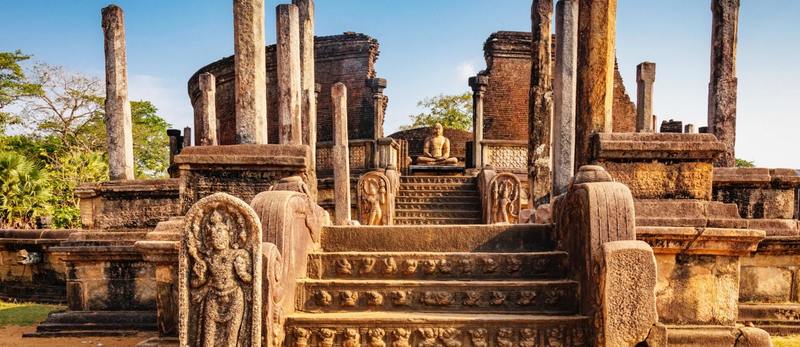
The Polonnaruwa Vatadage is an ancient structure located in a quadrangular area, Dalada Maluva in the ancient city of Polonnaruwa. This Vatadage occupies most of the southwestern area of Dalada Maluva and is the most prominent structure among the other oldest and most sacred monuments of the city. The Polonnaruwa Vatadage has 2 stone platforms decorated with elaborate stone carvings. The lower one has a single entrance while the other one can be accessed through four doorways facing the four cardinal points. The Buddha statues are constructed around the wall facing the four cardinal points. This Vatadage is built by king Parakramabahu the Great, in the early 20th century and later embellished by king Nissankamalla (1198 – 1206). The first entrance or the outer structure, which is 18m in diameter is found with gorgeous artistry decorated with carvings of lions, dwarfs, and topped by an abstract lotus design. The upper structure or the second entrance has moonstones flanked by Nagaraja (Cobra king) with the belief to prevent evil spirits from entering the premises. This moonstone gets elaborated as a semi-circular welcome step stone polished in granite which indicates the spiritual journey from “samsara”, the endless cycle of death and rebirth, to “Nirvana”, the ultimate escape from suffering. The moonstone at the northern entrance is the finest in Polonnaruwa.
Buduruwagala
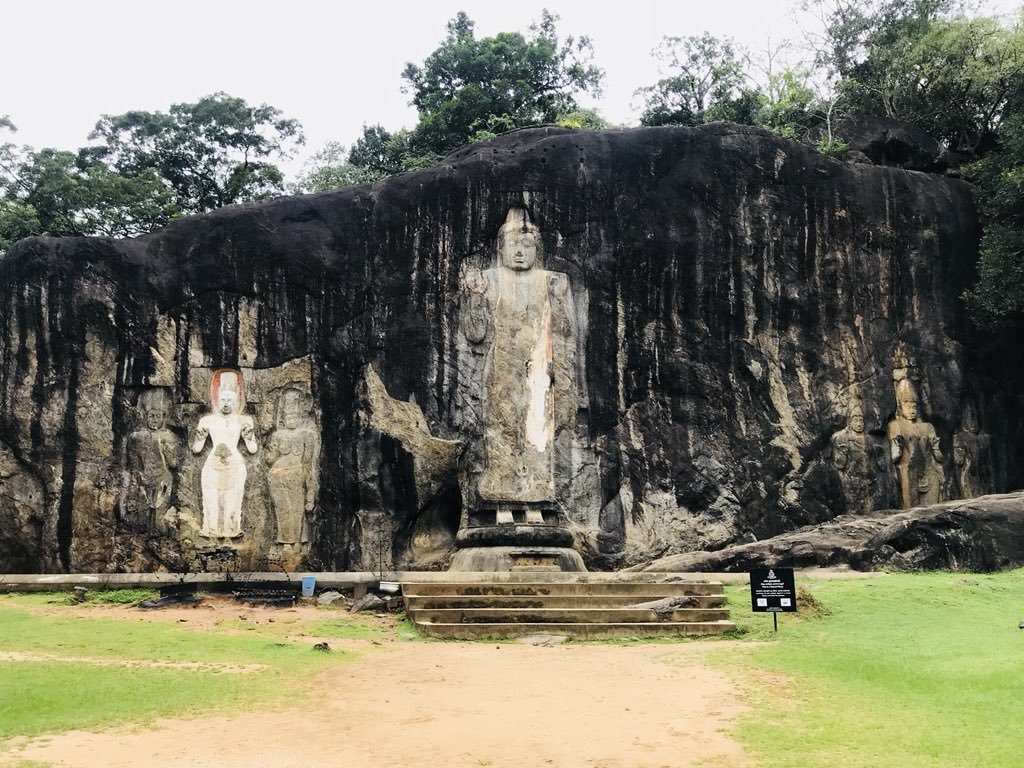
The name Buduruwagala means, “The rock with the statue of Buddha”, and of course this is exactly what it is. Seven statues sculptured in a single rock face. The rock itself is in the shape of a kneeling elephant with its head-on. Of the seven, three smaller statues each are sculptured on either side of the main Buddha statue. The centrally sculptured main Buddha is the tallest in Sri Lanka which is 51ft in height. The Buddha is in the Samabhanga posture and has the right hand gesturing the Abhaya Mudra. These sculptures are identified as a collection of Buddha and Bodhisatva figures. Although there is no documented information about this in ancient scriptures, it is now believed that this carving was done during the last days of the Anuradhapura period (between 8 – 10 Century) These carvings are of the Mahayana Buddhist style and is similar to the statues at the Dova temple. This place is located about 5 km from the Wellawaya on the Thanamalwila road.
Abhayagiri Dagoba
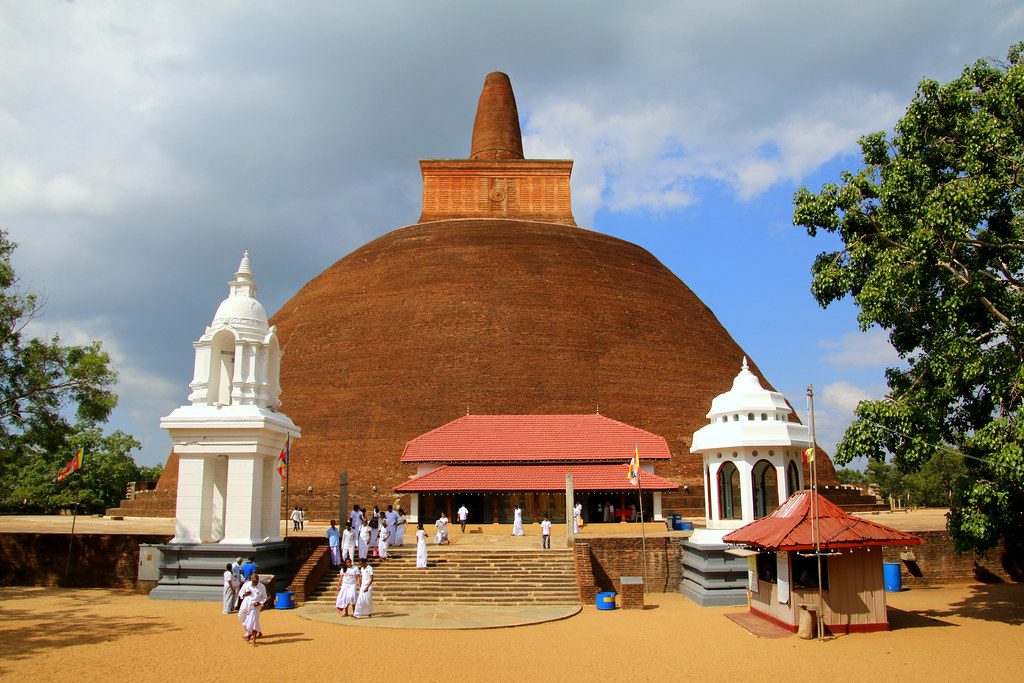
Abhayagiri Dagoba, one of the major monastery sites of Mahayana, Theravada, and Vajrayana Buddhism that was situated in Anuradhapura, Sri Lanka. It is one of the most extensive ruins in the world and one of the most sacred Buddhist pilgrimage cities in the nation. During the 1st century B.C., this Dagoba was the ceremonial focus of the 5000 strong Abhayagiri Monastery. Originally over 100m high, it was one of the greatest structures in the ancient world, its scale only matched by the pyramids of Giza. After several reconstructions, today this Abhayagiri Dagoba stands 75m high above the forest floor, roofed with gilt bronze or tiles of burnt clay glazed in brilliant colors. The name means “hill of protection” or “fearless hill”. The Saddarma Rathnawaliya scripture records that a statue is a golden bull containing relics of Buddha was buried in the core of the stupa. This place has some interesting facts which include one near the western stairway of an elephant pulling up a tree. A large slab with a Buddha footprint can be seen on the northern side, and the eastern and western steps have unusual moonstones made of concentric stone slabs. Moonstone here refers to the shape of a stone, not any type of stone.
Samadhi Statue
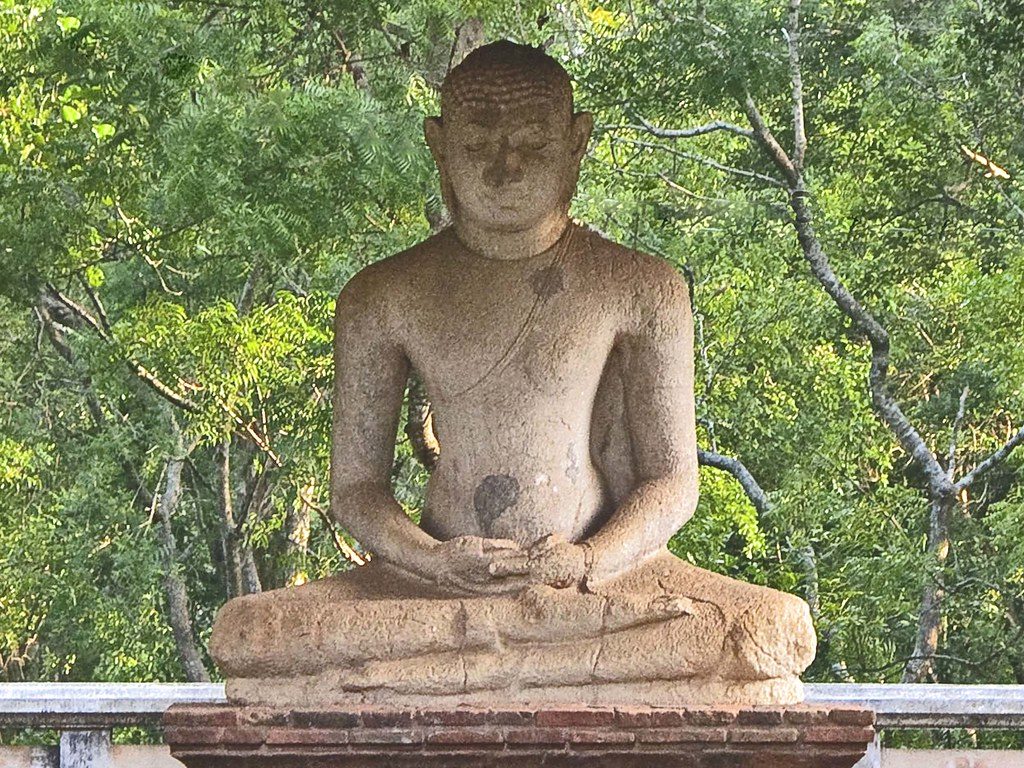
The Samadhi statue is one of the popular statue situated at Mahamevnāwa Park in Anuradhapura, Sri Lanka. The Buddha is depicted in the position of Dhyana Mudra, the posture of meditation associated with his first enlightenment. This statue is 7 feet 3 inches in height and is carved on dolomite marble. Found in the year 1886, it is similar to the Gupta period Buddha images, it is also believed that originally the image was glided and had inlaid eyes made of precious gems. It is also one of the four statues around a sacred Bodhi tree shrine. In this dhyana Mudra, Buddha sits cross-legged with his upturned palms placed one over the other on his lap. This position is universally known throughout the world, and this statue is, therefore, one of the most typical and popular pieces of Buddha sculpture. This statue is dated to about the 4th century and is one of the finest Buddha statues in the country. A replica carved out of the white team, was gifted to India’s Prime Minister Modi on his visit to Sri Lanka. It is also said that Jawaharlal Nehru, India’s first Prime Minister, contemplated using a photo of this statue while in Dehradun prison. After she became the PM of India, he visited this place to see the actual statue. A 25-foot replica is this Buddha was created by a monk sculpted, The Venerable Embulawitiya Medhananda Thero, at the New Jersey Buddhist Vihara and Meditation Center (NJBV) in New Jersey, USA. It was also declared as a cultural landmark by the Township Council.
Bahirawakanda Vihara Buddha Statue
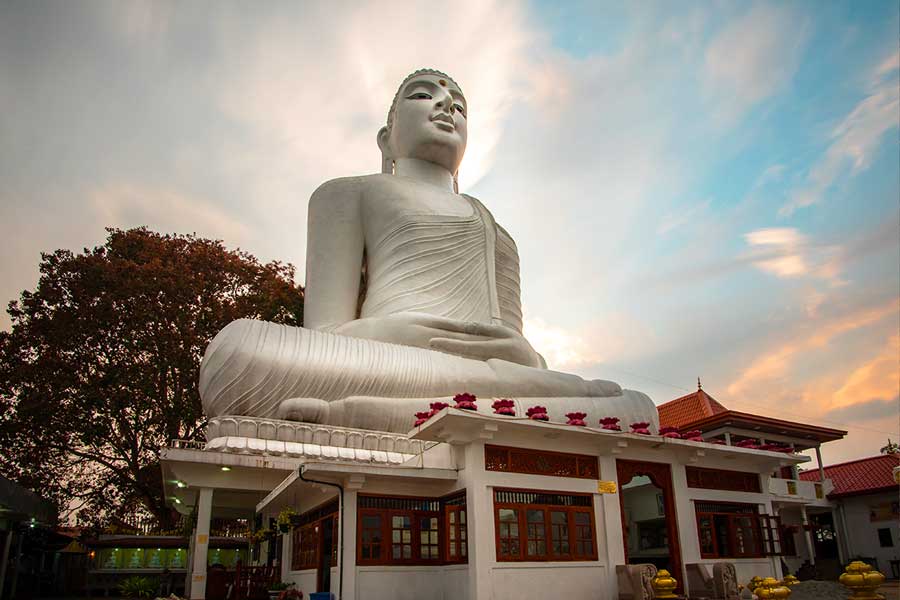
Sri Maha Bodhi Viharaya is a Theravada Buddhist temple in Kandy, Sri Lanka. This temple is known for its giant Buddha statue. The statue is depicted in the position of the Dhyana Mudra and it stands at 26.83m (88 feet) high and is one of the tallest Buddha statues in Sri Lanka. This temple is built in the land donates by the minister of lands, Hector Kobbekaduwa. Visitors can climb the top of the hill for panoramic views of the city of Kandy, the inside of Bogambara prison, and the mountain range nearby. The best time to visit Bahirawakanda is at night when the entire statue is lit up and the city of Kandy spreads out in a map of twinkling lights.
Independence Memorial Hall & Museum
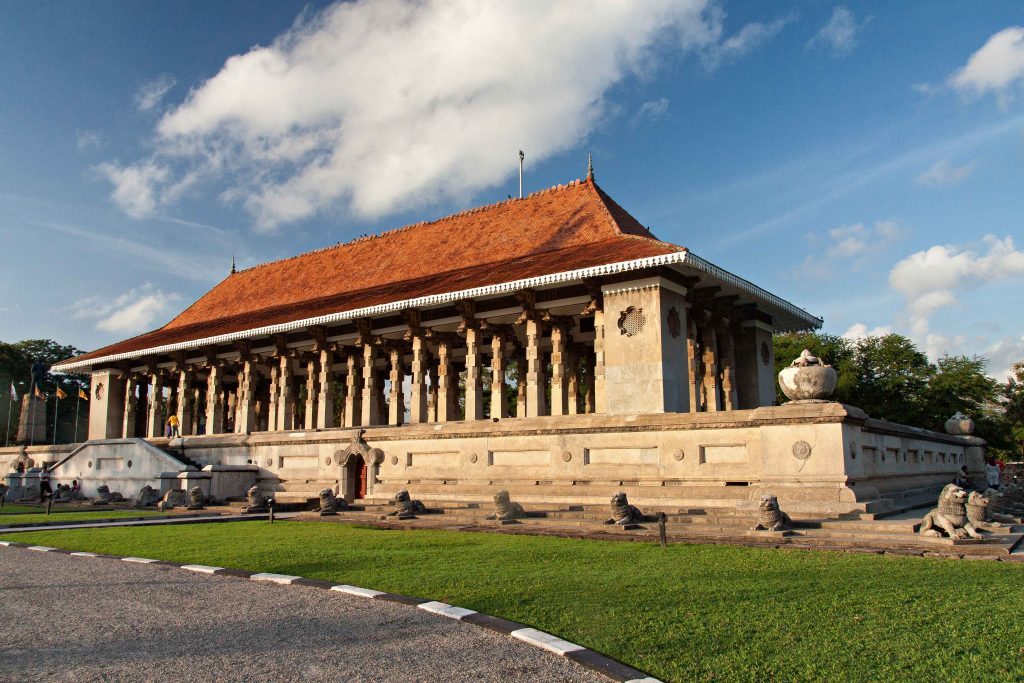
This Independence memorial hall, also known as Independence Commemoration Hall is a national monument of Sri Lanka built for commemoration of the Independence of Sri Lanka from the British rule with the restoration of full governing responsibility to a Ceylonese elected legislature on February 4, 1948. It is located in Independence square in the Cinnamon Gardens, Colombo. It also houses the famous Independence Memorial Museum. This building was designed by a group of eight notable architects led by Tom Neville Wynne Jones CBE. The Independence Memorial Museum entrance faces the square pools of Independence square, which resembles like walking into a cave. This place preserves glass-encased weapons, telephones, diaries which were used by them a century or two ago.
Avukana Buddha Statue
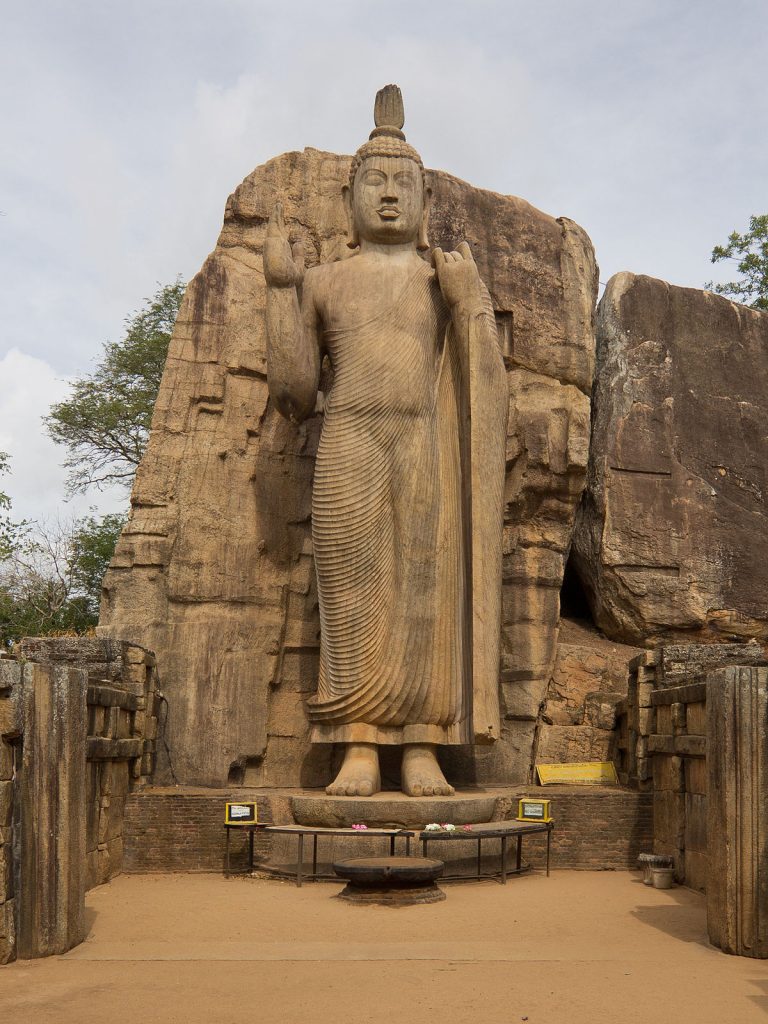
This Avukana statue is a standing posture of Buddha near kekirawa in Northcentral Sri Lanka. This statue which has a height more than 40 feet (12m) was carved out of a large granite rock face during the 5th century. It depicts a variation of Abhaya Mudra, and the closely worn robe is elaborately carved. A narrow strip of rock has been left at the back of the statue, connecting it to the rock face and supporting it. The pedestal on which the Buddha stands, which is carved in the form of a lotus flower, was carved separately and positioned under the statue. The robe is worn tightly, clearly outlining the shape of the body and its pleats are carved clearly and delicately. It is worn over the left shoulder, and the right shoulder is bare which depicts the tradition in Buddha statues of Sri Lanka. This Avukana statue is one of the best examples of a standing statue constructed in ancient Sri Lanka. It is also one of the popular tourist attractions.
Maligawila Buddha Statue
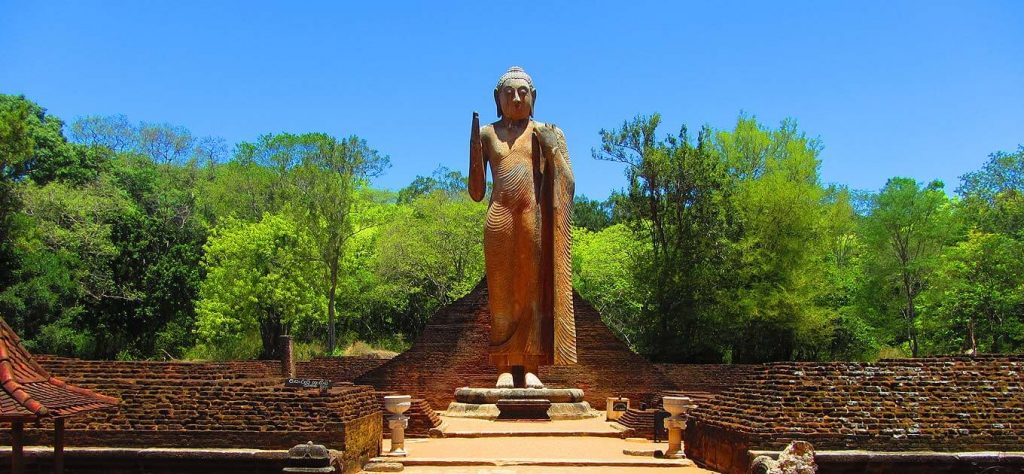
This statue is a standing figure of the Buddha, which was carved out of a large limestone rock during the 7th century by a prince named Aggabodhi. It is the tallest free-standing Buddha found in the country. This statue is located close to the village of Maligawila in the Moneragala District. This statue stands at a height of 37 feet 10 inches. This statue has a close resemblance to the Avukana statue and depicts the same asisa Mudra, a variation of the Abhaya mudra. The statue was discovered in 1951, falling from its pedestal broken into several pieces. The statue was reconstructed and raised in 1980 under the direction of Ranasinghe Premadasa, who was the President then.
World’s tallest granite Samadhi Buddha statue in Kurunegala
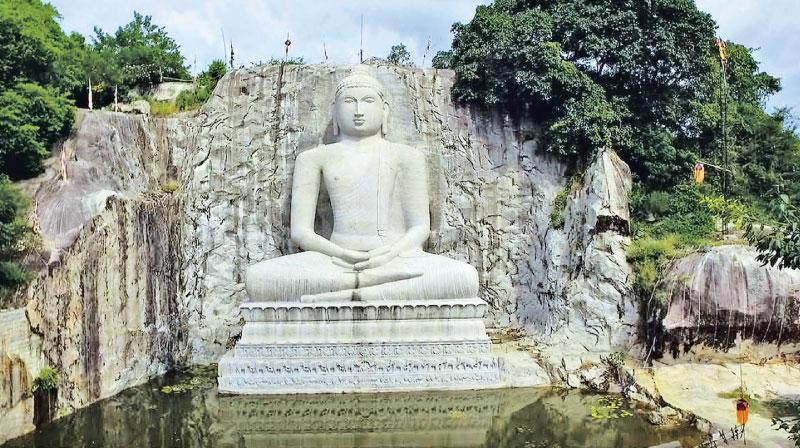
This tallest Buddha statue was built in the Rambodagalla area near ridigama in Kurunegala. This Samadhi statue is 67.5 feet high and is made of huge granite rock. The sculpture of this statue was started on 13th September 2002 at the monaragala pirivena vihara, Rambodagalla. The craftsmanship was down by the Indian carpenters led by “sthapathi”. This statue is situated 5 km away from mallawapitiya on the Kurunegala Kandy Road.


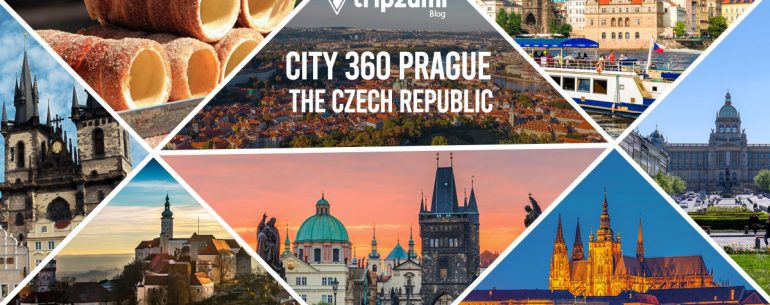
Leave a Reply